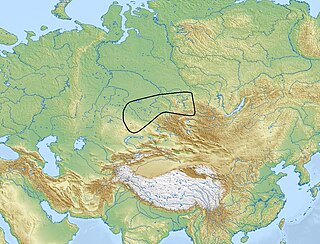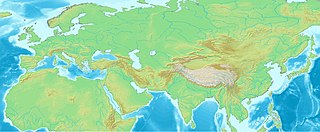 W
WThe Andronovo culture is a collection of similar local Bronze Age cultures that flourished c. 2000–900 BC in western Siberia and the central Eurasian Steppe. Some researchers have preferred to term it an archaeological complex or archaeological horizon. The older Sintashta culture, formerly included within the Andronovo culture, is now considered separately within Early Andronovo cultures.
 W
WThe Belozerskaya culture is an archaeological culture of the later Bronze Age that replaced the Srubnaya culture on the steppes of Ukraine and Moldova. There are finds near the lower Don and in Kuban and Crimea. It was identified as an independent archaeological culture in the 1980s.
 W
WThe Bondarikhinskaya culture is an archaeological culture during the late Bronze Age that replaced the Srubnaya culture. It was found from the left shore of the Dnepr to the upper and mid Seversky Donets, and it the east it reached the Don bassin and mid-Oka. The culture was identified in the 50s by V. A. Ilyinskaya. It is represented by both fortified and non-fortified settlement, grave fields, treasures and scattered finds. They lived in pit houses, semi-pit houses and houses on flat ground. The cemeteries are tumuli, and flat ground graves with cremated remains in urns or small pits.
 W
WThe Chust culture is a late Bronze Age and early Iron Age culture which flourished in the Fergana Valley of eastern Uzbekistan from ca. 1500 BC to 900 BC.
 W
WThe Karasuk culture describes a group of Bronze Age societies who ranged from the Aral Sea to the upper Yenisei in the east and south to the Altai Mountains and the Tian Shan in ca. 1500–800 BC.
 W
WThe Pazyryk culture is a Scythian nomadic Iron Age archaeological culture identified by excavated artifacts and mummified humans found in the Siberian permafrost, in the Altay Mountains, Kazakhstan and nearby Mongolia. The mummies are buried in long barrows similar to the tomb mounds of Scythian culture in Ukraine. The type site are the Pazyryk burials of the Ukok Plateau. Many artifacts and human remains have been found at this location, including the Siberian Ice Princess, indicating a flourishing culture at this location that benefited from the many trade routes and caravans of merchants passing through the area. The Pazyryk are considered to have had a war-like life.
 W
WScythian cultures is a conventional historiographic term for a group of similar archaeological cultures which flourished across the entire Eurasian Steppe during the Iron Age from approximately the 9th century BCE to the 2nd century CE. Primary written sources like Herodotus do not call these cultures Scythian; in Greco-Roman world the Scythia proper was located in the north of the Black Sea, where by the name of the people called Scythians traded with the Greeks.
 W
WThe Srubnaya culture, also known as Timber-grave culture, was a Late Bronze Age culture in the eastern part of Pontic–Caspian steppe. It is a successor of the Yamna culture, Catacomb culture and Poltavka culture. It is co-ordinate and probably closely related to the Andronovo culture, its eastern neighbor. Whether the Srubnaya culture originated in the east, west, or was a local development, is disputed among archaeologists.
 W
WThe Tashtyk culture was an archaeological culture that flourished in the Yenisei valley in Siberia from the first to the fourth century CE. Located in the Minusinsk Depression, environs of modern Krasnoyarsk, eastern part of Kemerovo Oblast, it was preceded by the Tagar culture.
 W
WThe Zarubintsy or Zarubinets culture was a culture that from the 3rd century BC until the 1st century AD flourished in the area north of the Black Sea along the upper and middle Dnieper and Pripyat Rivers, stretching west towards the Southern Bug river. Zarubintsy sites were particularly dense between the Rivers Desna and Ros as well as along the Pripyat river. It was identified around 1899 by the Czech-Ukrainian archaeologist Vikentiy Khvoyka and is now attested by about 500 sites. The culture was named after finds of cremated remains in the village of Zarubyntsi on the Dnieper.